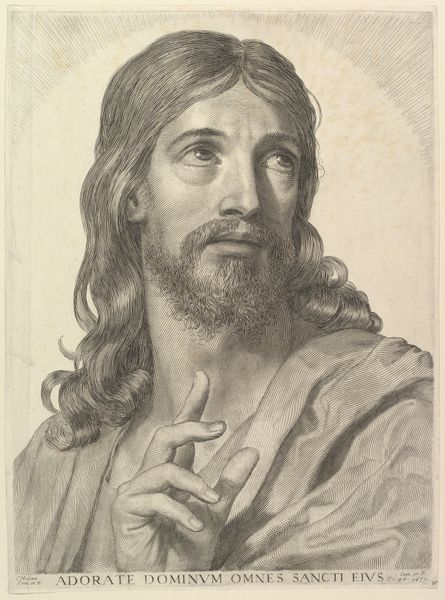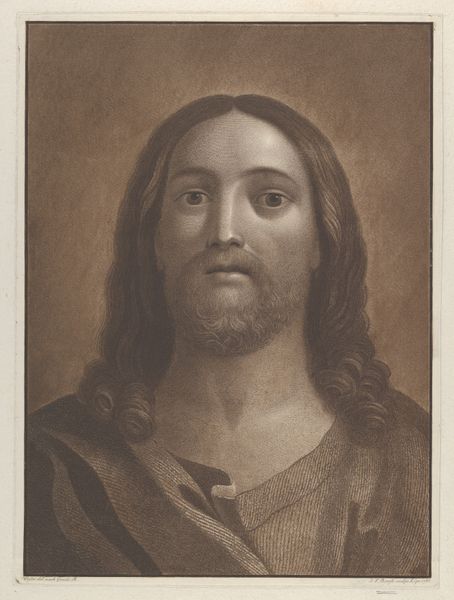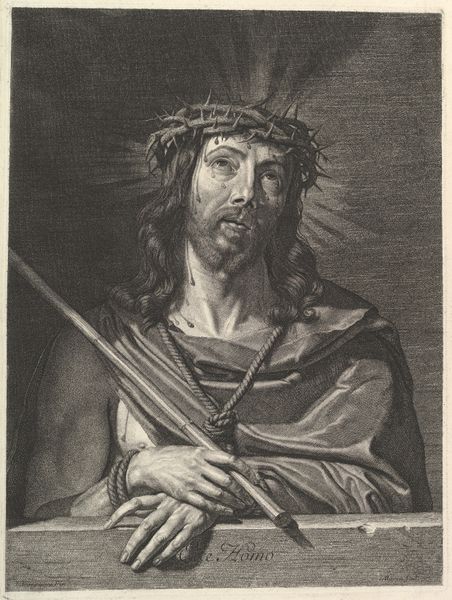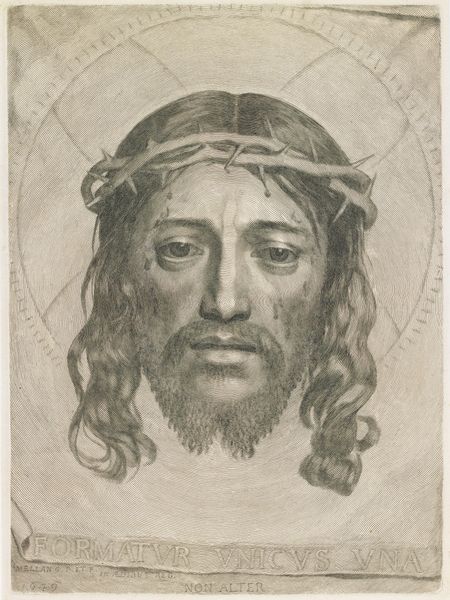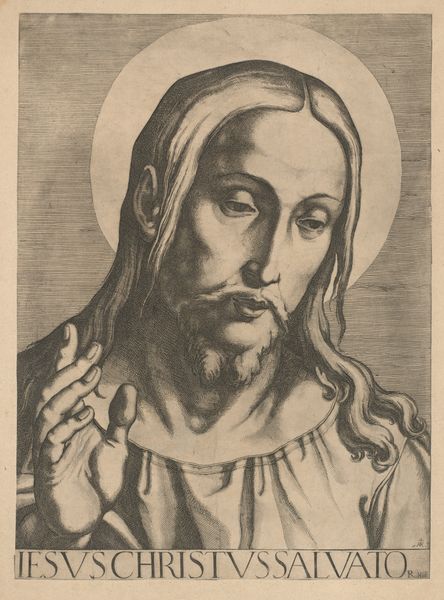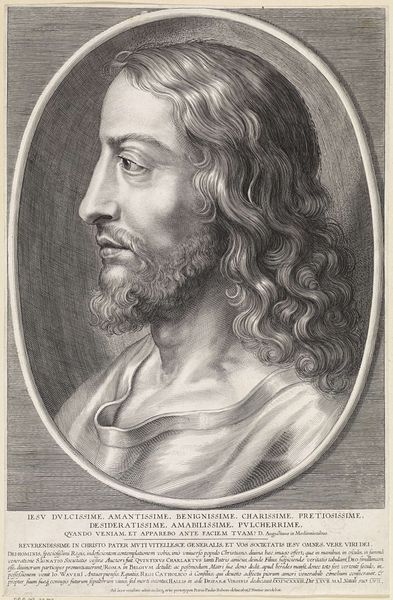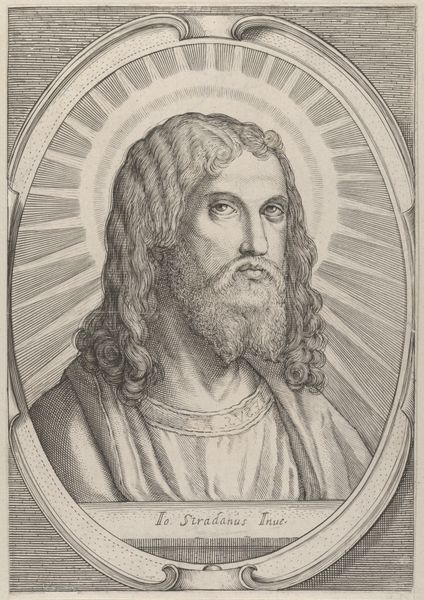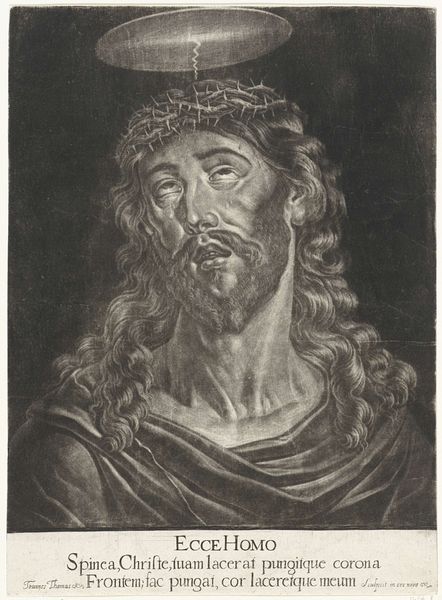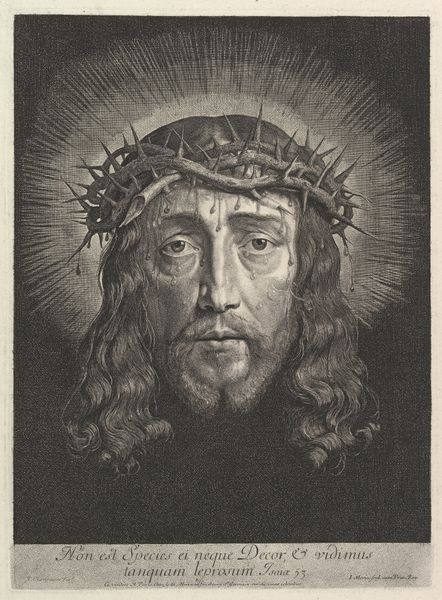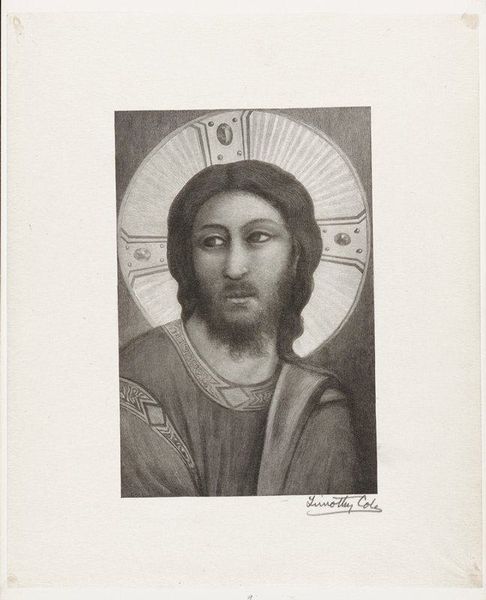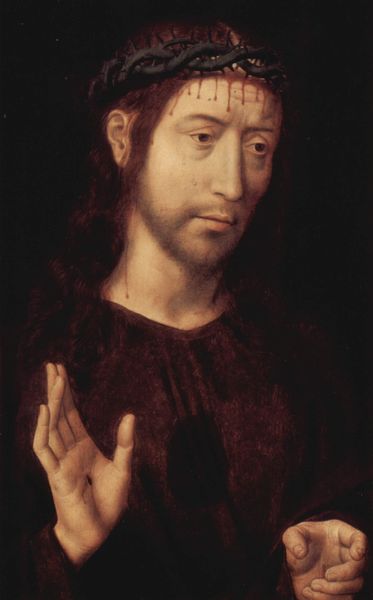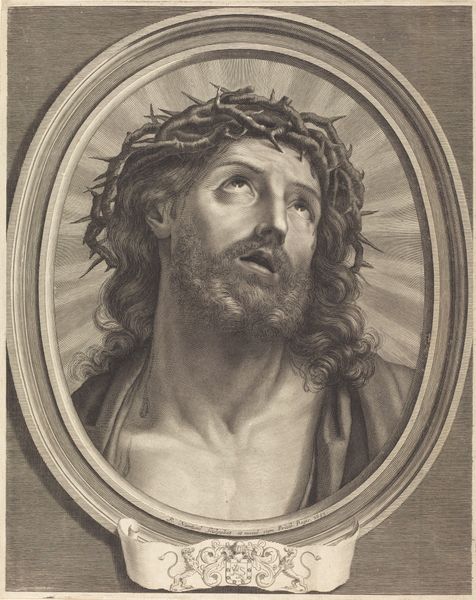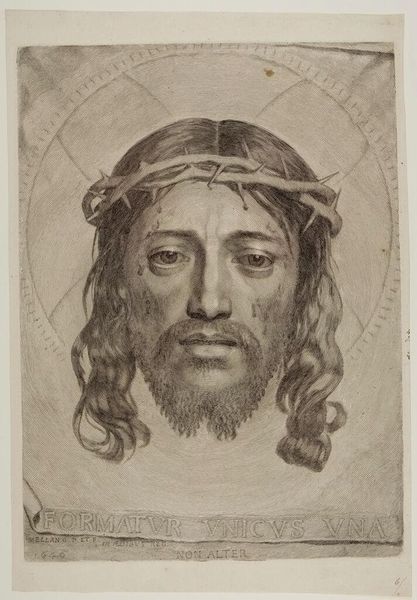
print, engraving
#
portrait
#
baroque
# print
#
old engraving style
#
pencil drawing
#
chiaroscuro
#
portrait drawing
#
engraving
Dimensions: height 434 mm, width 315 mm
Copyright: Rijks Museum: Open Domain
Editor: Here we have Jean Morin's engraving, "Christus als Salvator Mundi," made around 1640 to 1650. The dark background really makes the face stand out. How do you interpret this work in the context of its time? Curator: The piece utilizes chiaroscuro, a technique that dramatically emphasizes the contrast between light and dark, not just for visual effect but also ideologically. Consider, who in the 17th century had access to light, both literally through candles or torches, and figuratively, through knowledge and power? And conversely, who was left in the dark? This print presents Christ as a beacon, but it also begs us to reflect on the structures that decide who gets to see the light. How might the printing process itself have shaped its distribution and reception? Editor: That's interesting, I never considered light and dark as an expression of social structures. So the Baroque style, known for its drama, served more than just aesthetic purposes? Curator: Precisely. Baroque wasn't just about opulent aesthetics. It was strategically employed by the Counter-Reformation to emotionally engage viewers, often to reinforce power structures. So, who do you think this image was designed to move, and what was it meant to inspire in them? Consider also, what did it mean to portray religious figures at a time of intense religious conflict? Editor: Perhaps the intention was to offer reassurance or guidance, but within a framework of established authority. It really makes you consider the different angles and societal forces that influenced art and its role at that time. Curator: Exactly. Engaging with the layers of social, religious, and historical meaning really enriches the experience of viewing this image. Editor: I will definitely think of that next time I look at Baroque art.
Comments
No comments
Be the first to comment and join the conversation on the ultimate creative platform.
